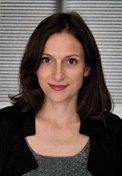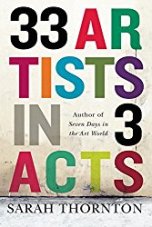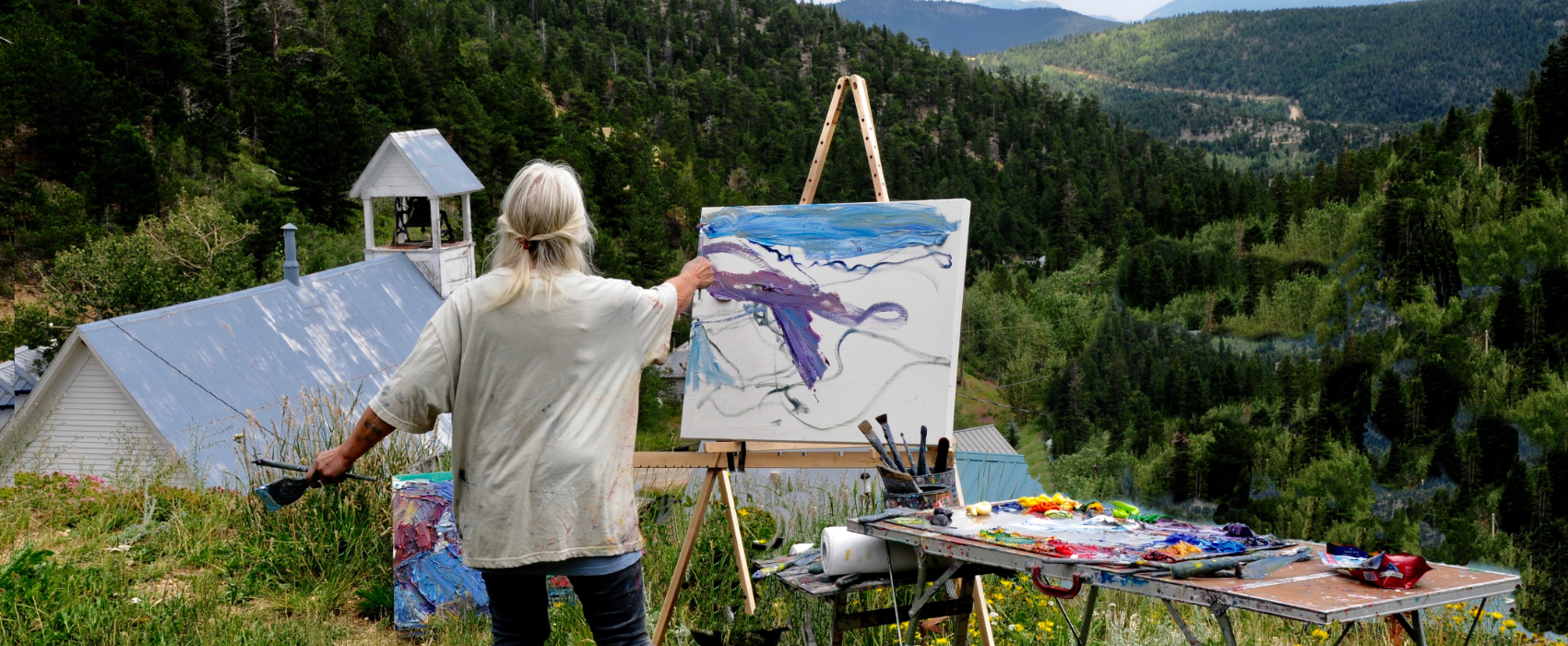As Hannah Shook paints like an orchestra conductor guiding music,
does she express “the more real than reality’ ?
Two questions to help penetrate into Hannah’s paintings:
What is the relationship of ART to NATURE?
How does Art influence our inner life?
Two answers from a literary and scientific genius:
” True works of art are a manifestation
of the higher laws of nature. ”
Johann Wolfgang von Goethe <–link to video
“A good work of art can and will have moral effects,
but to demand moral aims of the artist is to ruin his craft.”
J.W. von Goethe <–link to bio
“What is an Artist? What is Art?”

Traveling thousands of miles worldwide to over 13 countries for over four years, Sarah Thornton asked these two questions persistently to 130 professional artists. The answers from those she chose to include in her book are fascinating, often profound, and permeated with a sense of a “creative calling” often associated with higher purpose.
However, the dominating “business of art” (money) weaves an inexorable web of adulterating motivation.

Thornton also exhibits the incredible importance of Ego, not only in the artists, but also in the cast of dealers, curators, critics, galleries, magazines, books, and events.
Crucial to success in the market place is both self confidence and marketing.
The opening quote, from the “grandfather of modern art”
Marcel Duchamp – who turned a urinal upside down and called it art:
“I don’t believe in art. I believe in the artist.”
We don’t hear much about “moral effects,” but there is surely the sense of a “calling” to follow the muses of artistic expression. If we could magically eliminate the addictive rewards of money and ego gratification, we will find in the artistic soul the spirit striving for a greater reality than the sensory.

Though Goethe observes that Art can have “moral effects,” he is not referring to outer rules in the traditional “Thou Shall” or “Thou Shall Not.” In his literary masterpiece, Faust is “saved” in the end because of his striving for higher purposes, even though he had played with dangerous things like money, power, and sex.
Goethe exhibits in his own life a unification of art, science, and religion in a modern way, and he is well known for his view that, “He who possesses art and science has religion; he who does not possess them, needs religion.”
Throughout ancient history and even into the western medieval world and early Renaissance, we observe artists striving to express experiences called transcendent, religious, mystical, spiritual … Many modern contemporary artists continue disciplined
pursuits for greater reality – or “making the invisible visible.”
Goethe also observed that “Each one sees what he carries in his heart.”
We all experience how our tireless rhythmically beating heart lives between our life of action through our limbs and our life of thought in our relatively motionless head. In our heart truly lives one’s conscience – which are moral feelings. In the warmth of your heart are the truly human experiences of compassion, love, selflessness.

Inner feelings produced from seeing beauty in nature and art are like inspiring sunshine of love to our “heart of hearts.”
And, like a Sun, our Heart radiates creativity into our thoughts and into our actions –
– into the artist’s brush strokes.
 Shaman Training
Shaman Training
An excellent example of “seeing with the heart” is the story of an African boy abducted from his tribe when he was five and taught at a Jesuit seminary. Here, for fifteen years, he learned to think and act in a western way. Then when he was 20 years old, he returned to his tribe. The shaman elders could not understand why he could not “see” and began to work with him. One discipline (of many) that the shaman assigned him was to steadily and deeply observe a tree.
 “Malidoma tormented himself by sitting before the tree for hours, even days, until out of his experience of deep impotence, something broke open. Tears streamed down his face, he was at his wit’s end, powerless, surrendered – and in this utter vulnerability his soul opened up to the being of the tree. He entered the world of the elements. Suddenly nature was a blaze like a fire.” Bastiaan Baan
“Malidoma tormented himself by sitting before the tree for hours, even days, until out of his experience of deep impotence, something broke open. Tears streamed down his face, he was at his wit’s end, powerless, surrendered – and in this utter vulnerability his soul opened up to the being of the tree. He entered the world of the elements. Suddenly nature was a blaze like a fire.” Bastiaan Baan
 “Where I was now was just plain real… what I experience here is more real than reality. Everything I experienced on earth is semblance compared with my experiences here…
“Where I was now was just plain real… what I experience here is more real than reality. Everything I experienced on earth is semblance compared with my experiences here…
Never before had I felt so much love .. it was a love that surpassed any known classifications.” Malidoma Patrice Some’
Does the artist see and express “the more real than reality‘ ?

Jordan Wolfson – exemplary artist and Art Teacher in Boulder, Colorado – reveals amazing works of art from the hands and hearts of great artists that “clearly were not created for other people’s approval or to sell their products,” but rather to penetrate reality. This striving for greater consciousness he calls “Presence.”
Focusing on this artistic striving for and experiencing of connection with the world in a “relationship of love, intimacy, and immediacy,” Jordan quotes Rupert Spira: “Art heals the fundamental malaise of our culture, the feeling of alienation, despair, separation, the longing for love”
[see Wolfson’s 2018 talk “Painting and Presence” video or read the article.)

This theme of expressing greater realities is explored academically by curator Leesa Fanning in her new book titled Encountering the Spiritual in Contemporary Art” [July 2018 – Yale Books] – which also expands into other cultures and indigenous expressions. ( see video)
Is selfless, unconditional Love the highest purpose for the fully human heart?
Hannah states simply, “I love paint. I love to paint. I paint what I love.“
“My paintings are not planned or contrived
or following preconceived rules of art.”
“Painting is a co-creative expressive dance.“

“My work is about
movement and life force.
When I paint, everything becomes intensely alive; my whole being dances with the sun, the wind,
the gesture of all living things –
the tactile play
of color and paint.”
Hannah



So good to hear from you. Keep me posted on what’s going on. Susan Sutherland
LikeLike
Wonderful and extremely thought-provoking post. Great work..
LikeLike
Thank you, Weldon.
LikeLike